
e-Learning Module
My Role
Duration
Tools
Link
Overview
Research problem
There is a lack of resources for spina bifida (SB) patient education (Levy, 2023)
The pursuit of information about SB is a complex and overwhelming process for parents and caregivers
Traditional healthcare environments limits time between patient-doctor interaction.
This leads to:Limited patient education
Over medicalization in health provider language
Patients seeking out their own resources
Current Challenge
The problem revolves around patient accessibility to health information and autonomy. Parents need fast, personalized, and user-friendly health information (Levy, 2023).
The challenge: How do I design and create standardized, high-quality patient education materials for parents and caregivers focused on increasing accessibility and decreasing mental load?
I developed a prototype of an e-learning module with animations to inform how to optimally design animations for patient education and when and where they should be used within e-learning modules. This project also highlights general topics that is significant to the parent and caretaker audience, especially during the time of diagnosis, and how to appropriately deliver that content to them. It also proposes a design model for effective use of visuals to increase health literacy.
Research
Literature
After extensively reviewing literature, I identified two overarching themes for gaps in research.
Theme 1: Inadequate patient education resources for SB
Theme 2: Lack of frameworks for designing effective patient education in E-learning modules, animation design, and how to incorporate the two together
User Research (Needs Assessment)
I wanted to create a product that was tailored and serves the community; so I used a combination of patient observation, online community forums (Facebook, Reddit, The BabyCenter), and had conversations with non-profit organizers to identify the following focal areas in the module:
General Understanding of SB
Diagnosis
Life outlook with SB
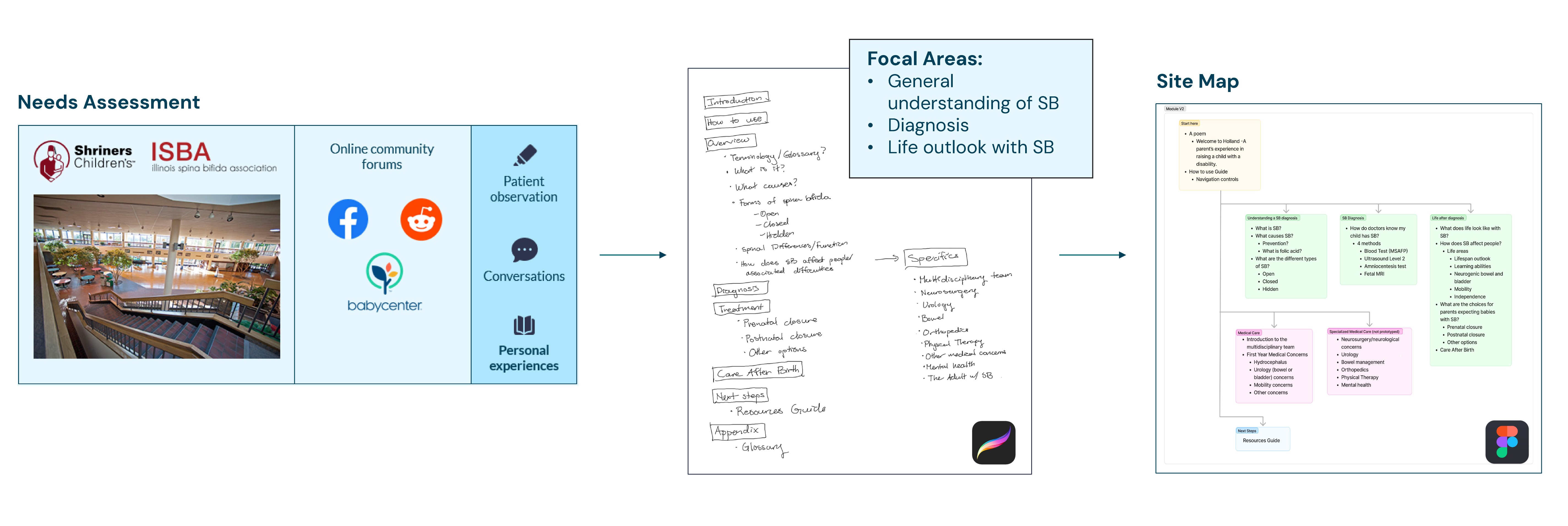
Design
E-learning module Pre-Production
I created a few learning goals and objectives and came up with a design documentation to inform my color choices and typography.
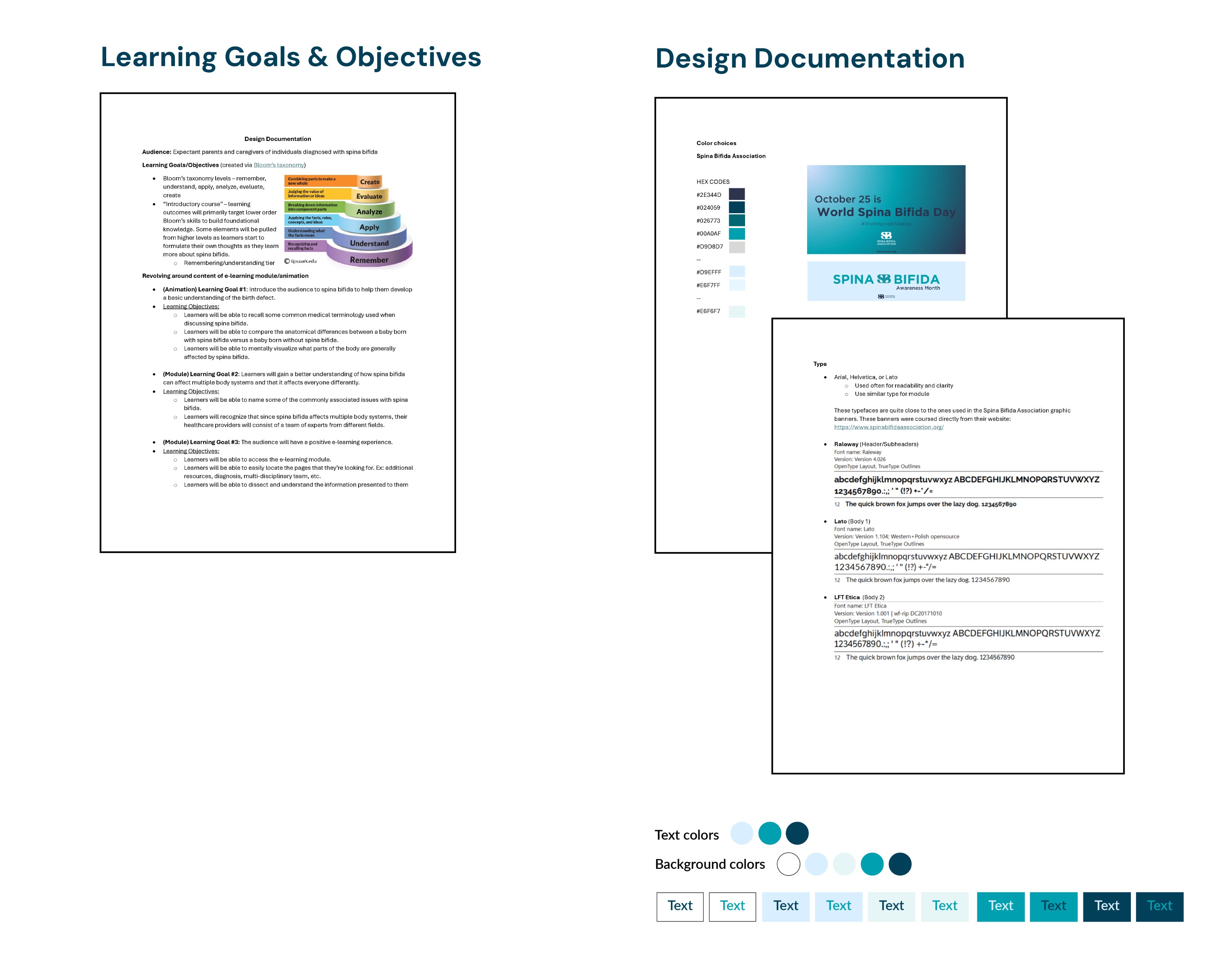
Animation Pre-Production
For my animation, I designed it primarily following concepts from Mayer's Cognitive Theory of Multimedia of Learning (CTML). When scriptwriting and storyboarding, I had the following goals in mind: use simplified, recognizable 3D models, minimal background with no distracting elements, and scope down the amount of content.
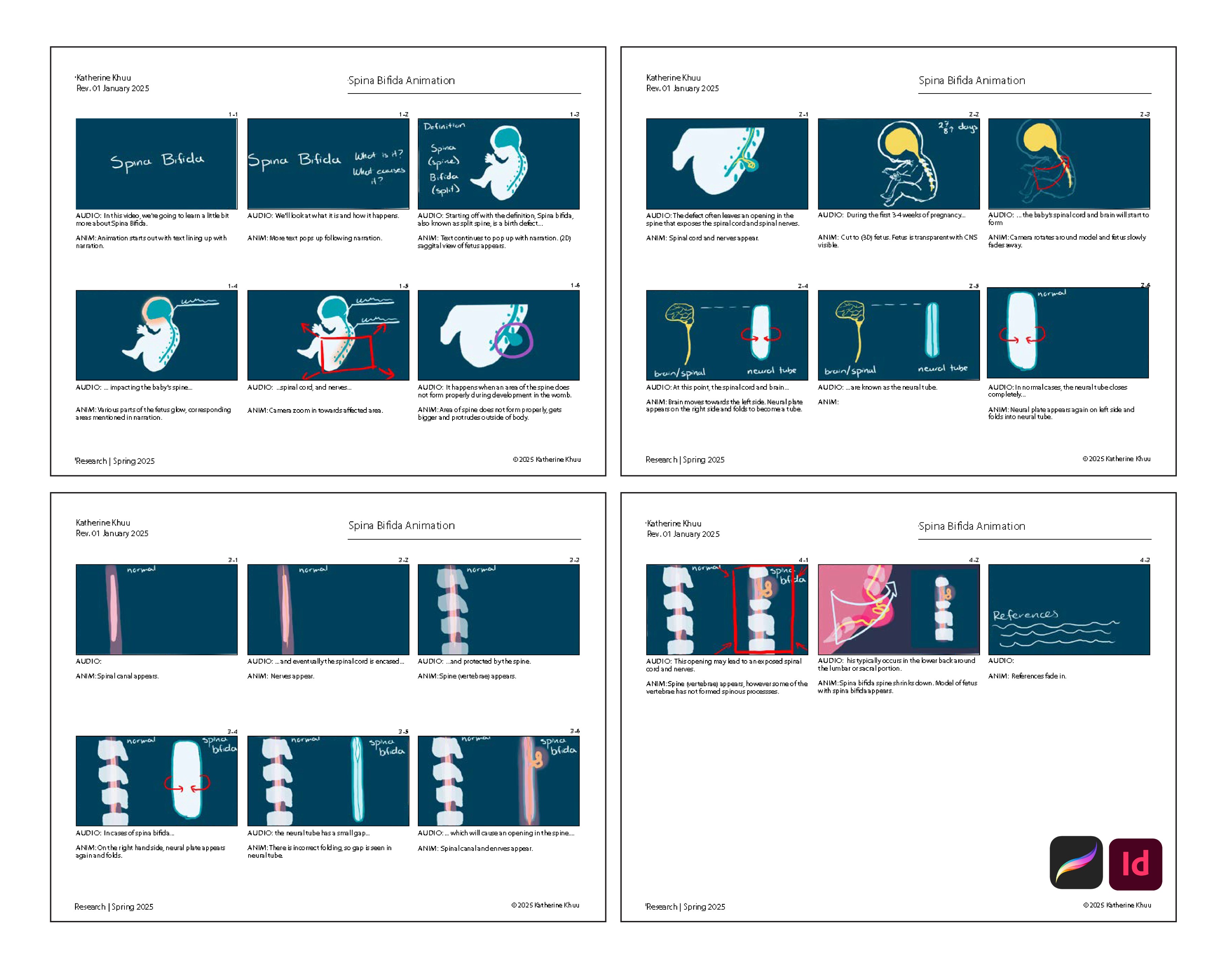
Animation Production
I proceeded to create my 2D and 3D assets and then began animating.
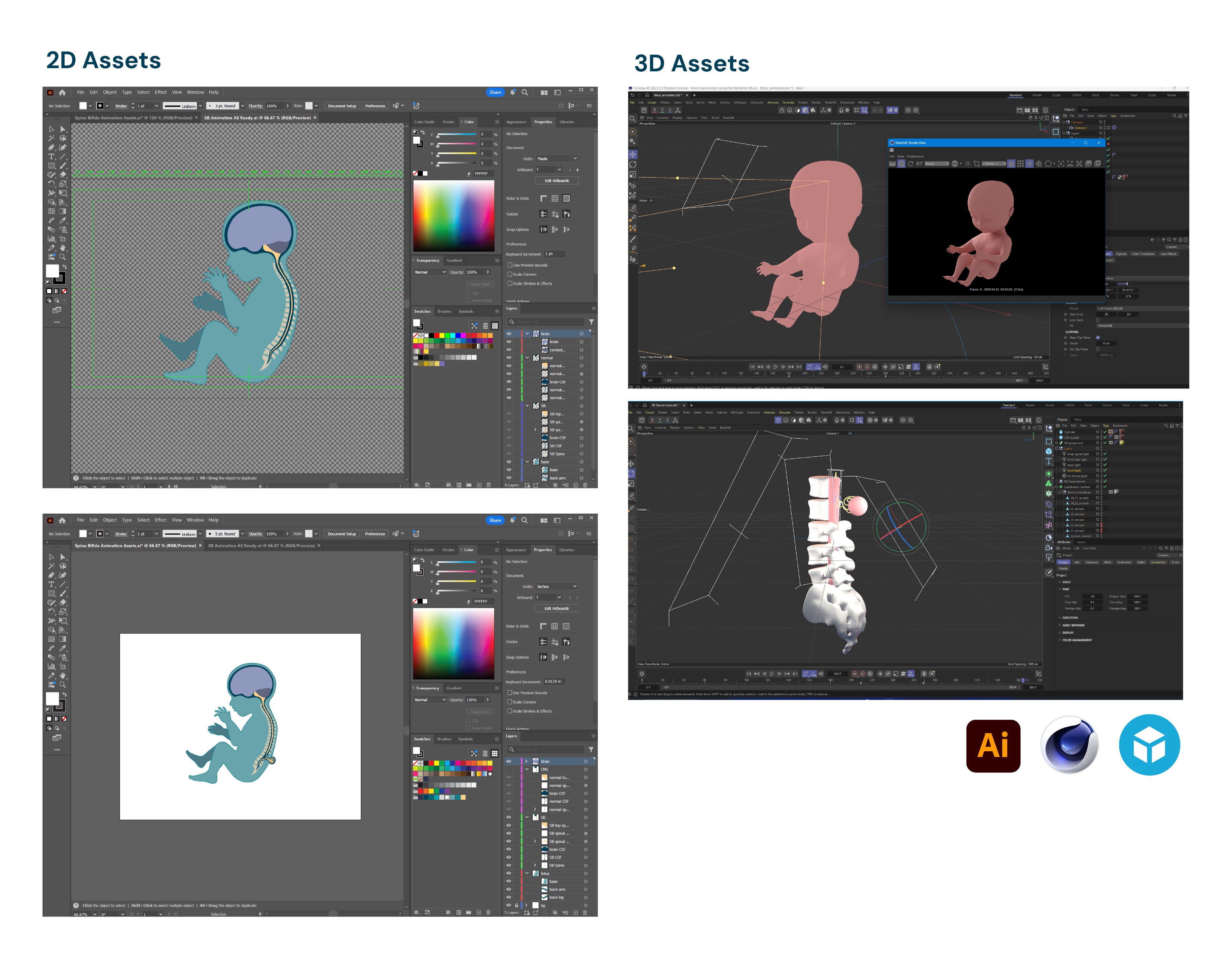
E-learning Module Production
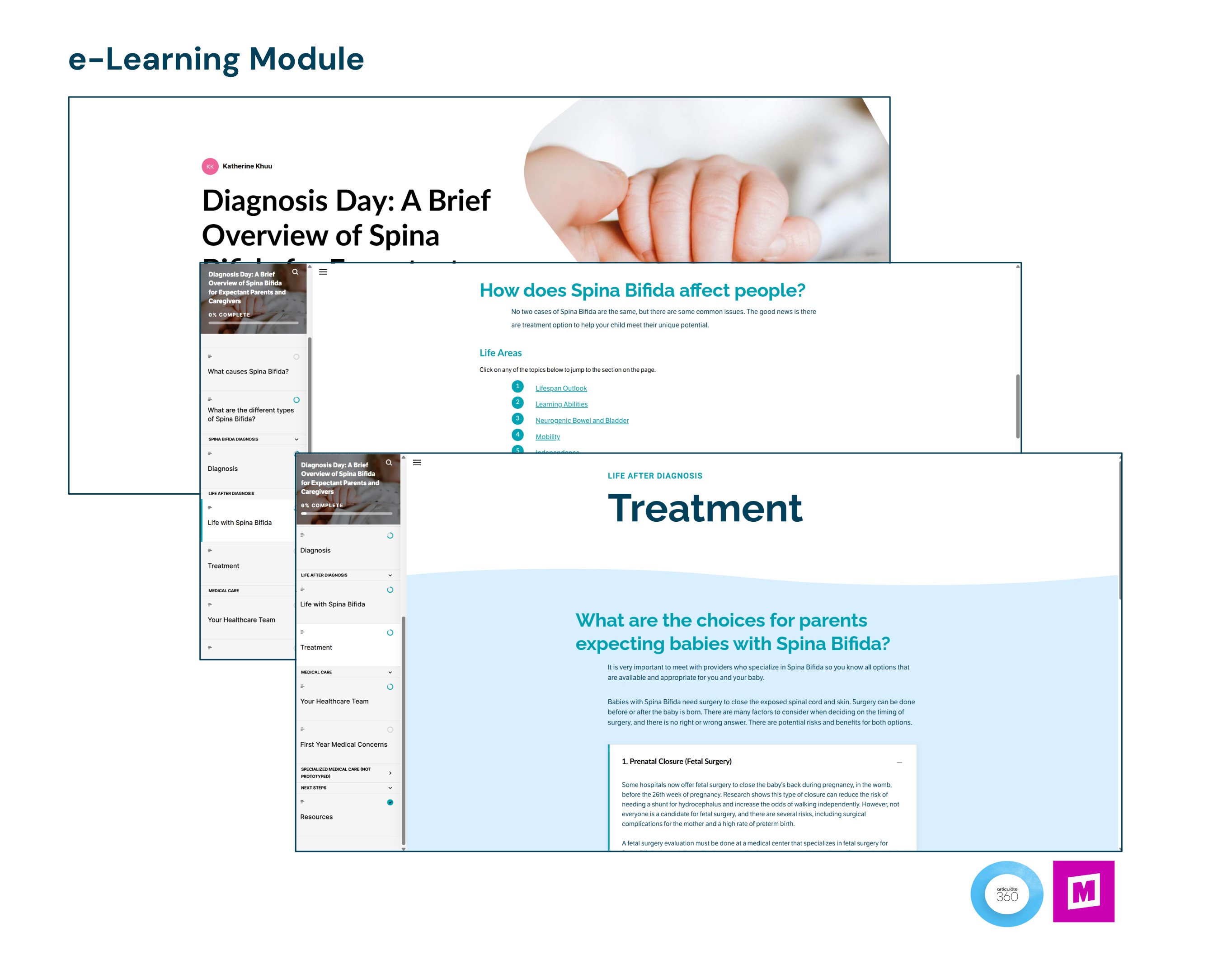
Results
Evaluation Plan
The foundation of my research aimed to explore how to create and incorporate animations into an e-learning module to serve as a supplemental patient education tool.
As of current, the problem is even if I create this deliverable, there aren’t any frameworks that I can use to create a strong evaluation strategy for its usability. So I explored two different frameworks to grab loose ideas from to construct my own theoretical framework in e-learning and animation:
Peter Morville’s user experience (UX) honeycomb
FASER LX by Safsouf, Y., Mansouri, K., & Poirier, F. , 2019.
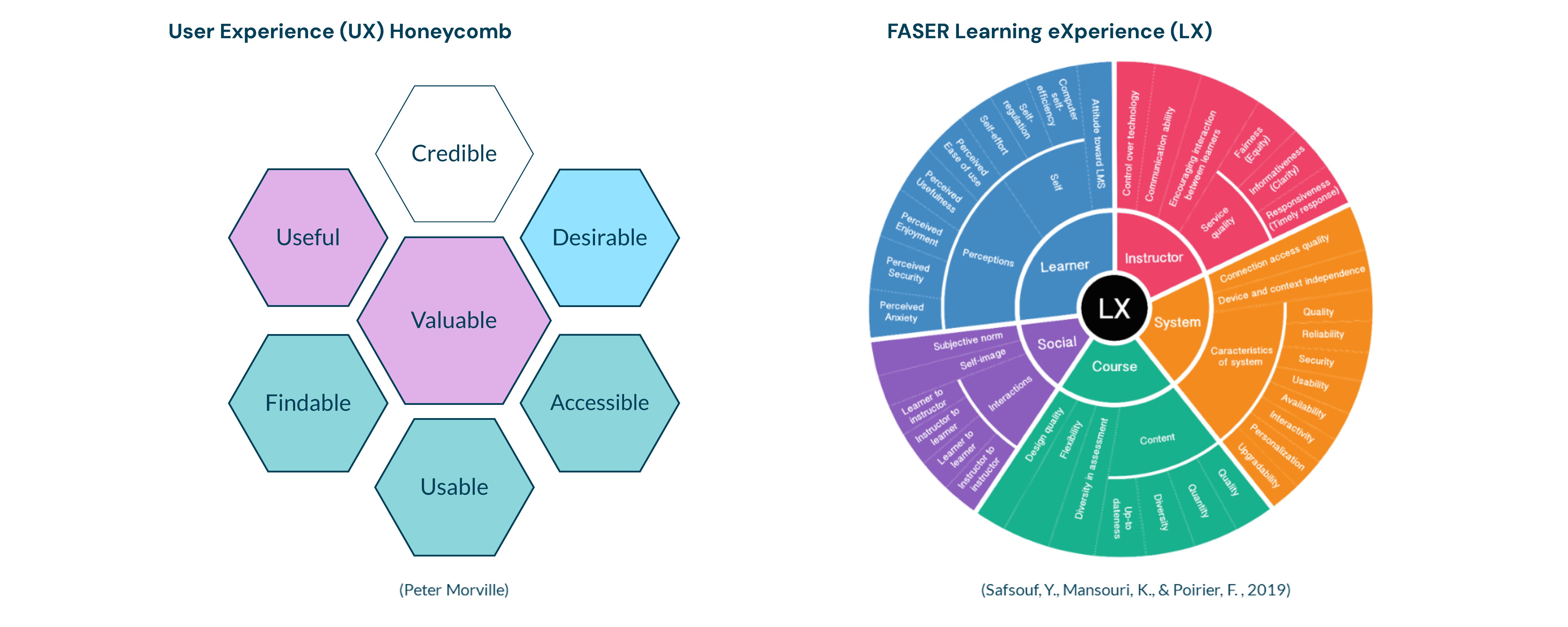
I decided to take a qualitative approach and hosted an open discussion with guided questions for my research committee. So in order to evaluate e-learning module with incorporated animation design, I created 3 overarching domains:
Learning factors (which is the learner’s traits that impact their interaction of the learning platform)
System factors (actual characteristics of the platform)
Course factors (the course content)
Each of these domains were further broken down and had very specific and dedicated questions that were sent to the committee in an evaluation document. The committee interacted with the deliverable independently first and then came together for discussion on a zoom meeting.
Results
Here are my findings after my evaluation:
Animation
When designing patient education animations for emotionally distressed, low-knowledge learners, the cognitive load theory (CLT) and cognitive theory of multimedia learning (CTML) are crucial to the learning process. The following CTML principles selected are crucial for engagement and should guide design, especially if the goals are similar to ones of this research:
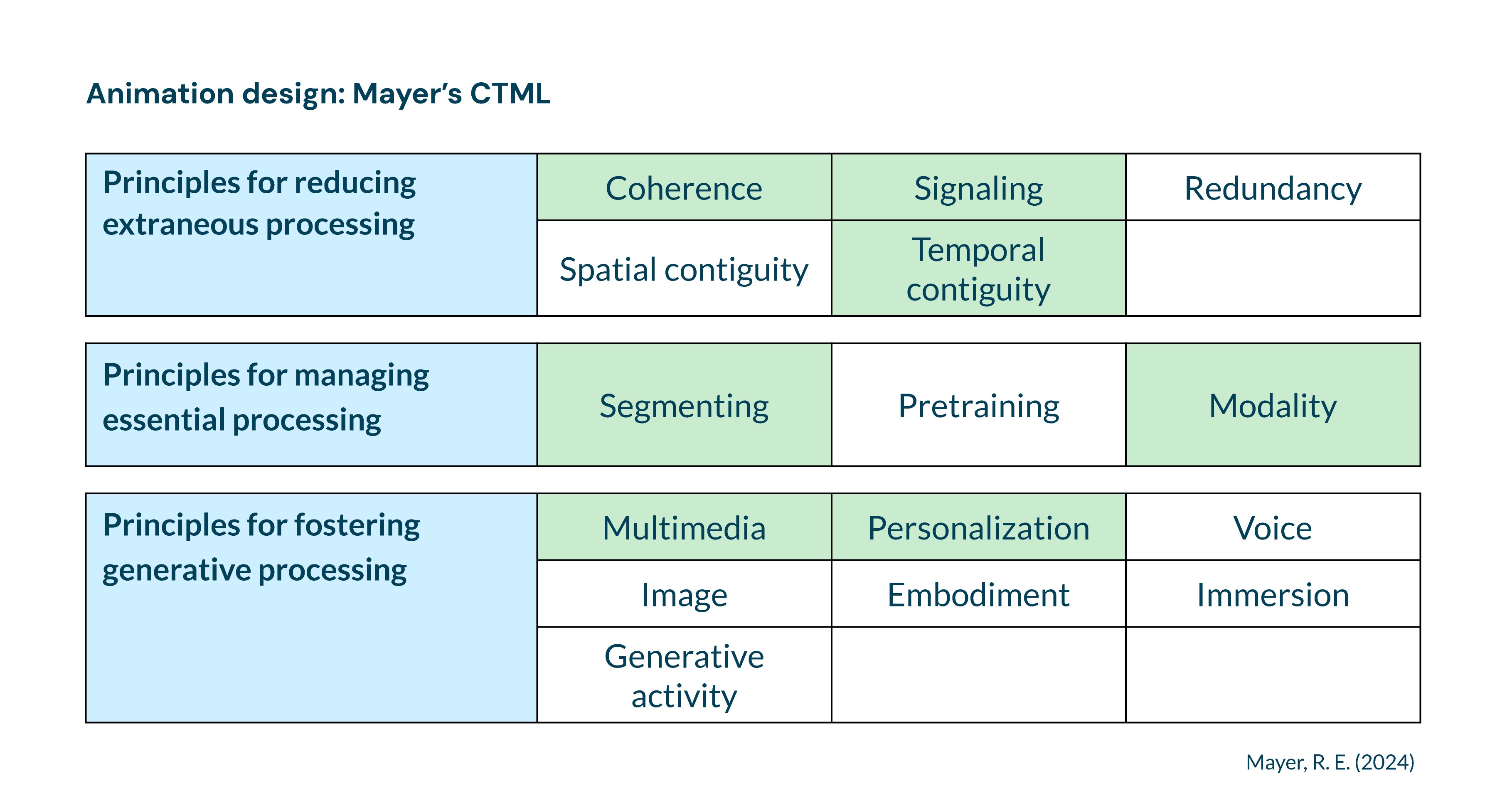
E-learning module
The study highlights that all domain subcategories support experiential learning. Neglecting any of them can hinder learning and reduce module effectiveness.
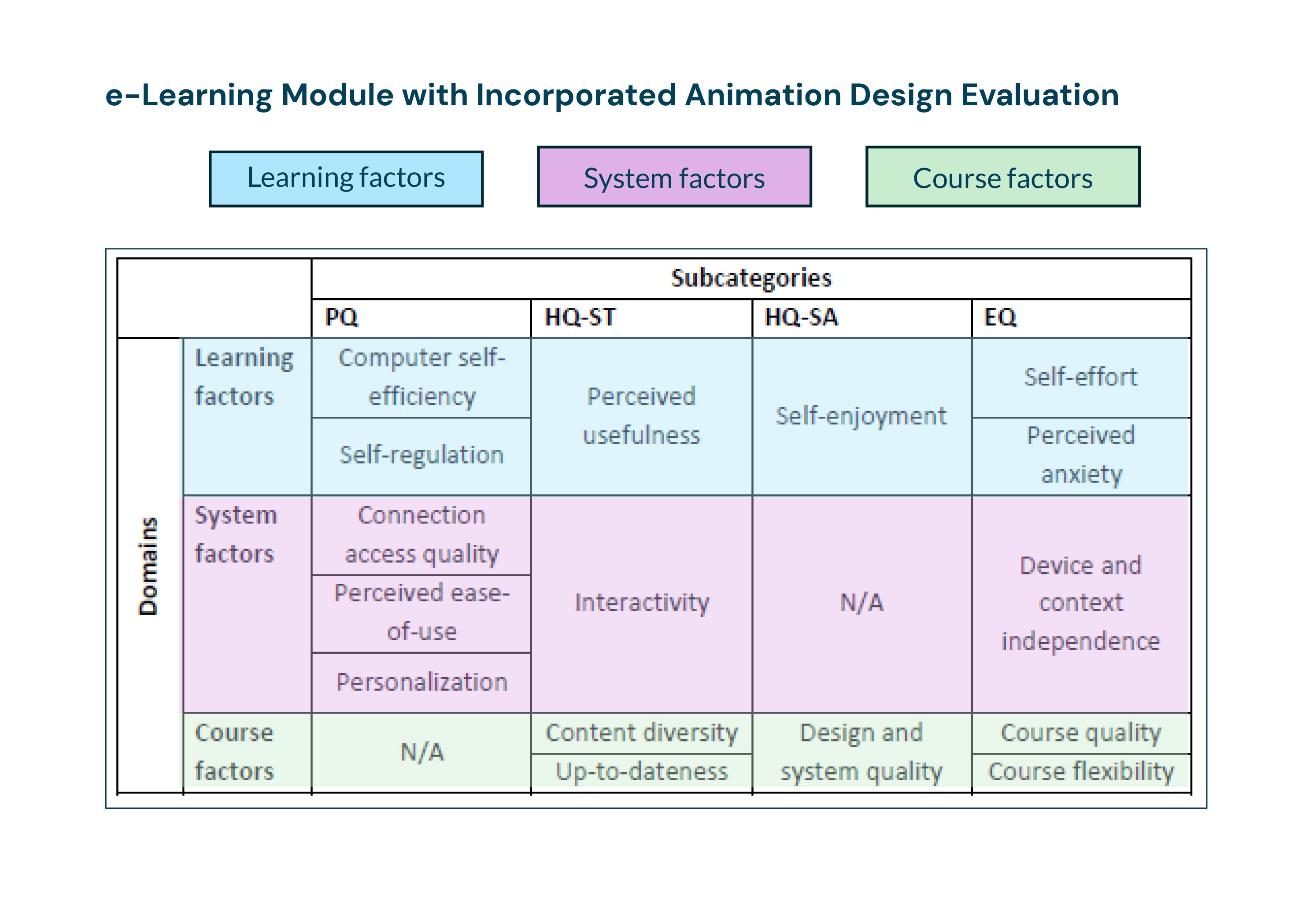
Takeaways
Biomedical Visualization
For the field of biomedical visualization, my research informs how to optimally design animations for patient education and when and where they should be used within learning modules.
Patient Education & Healthcare Innovation
In regards to patient education and healthcare innovation, my research highlights general topics that is significant to the parent and caretaker audience, especially during a potentially high stress environment, and how to appropriately deliver that content to them. In addition, it proposes a design model for effective use of visuals to increase health literacy.
References Mentioned
Levy, S. (2023). ‘And then there was silence’: Shaping practice through the experience of parents’ emotions. Journal of Research in Nursing, 28(8), 596–605. https://doi.org/10.1177/17449871231216057
Mayer, R. E. (2024). The past, present, and future of the cognitive theory of multimedia learning. Educational Psychology Review, 41, p. 36. https://doi.org/10.1007/s10648-023-09842-1
Safsouf, Y., Mansouri, K., & Poirier, F. (2019). A new model of learner experience in online learning environments. Information Systems and Technologies to Support Learning, 111, 29–38. https://doi.org/10.1007/978-3-030-03577-8_4


